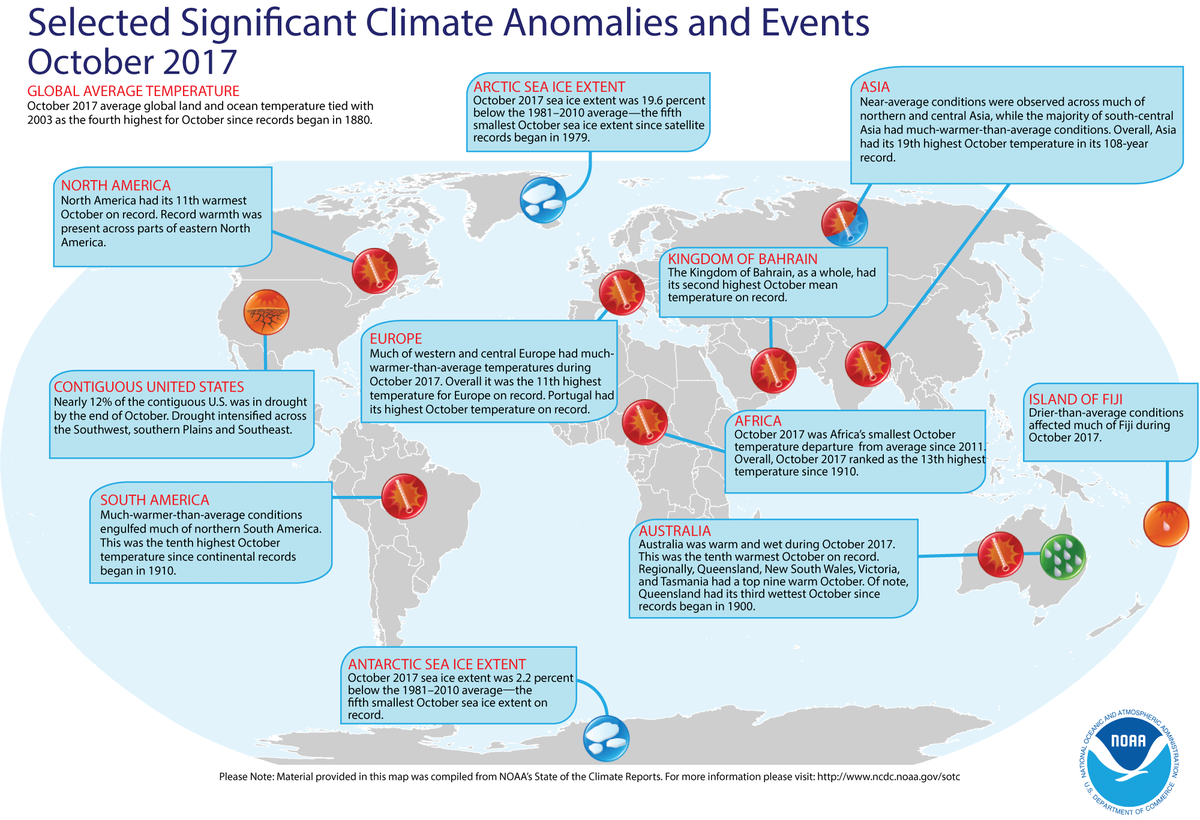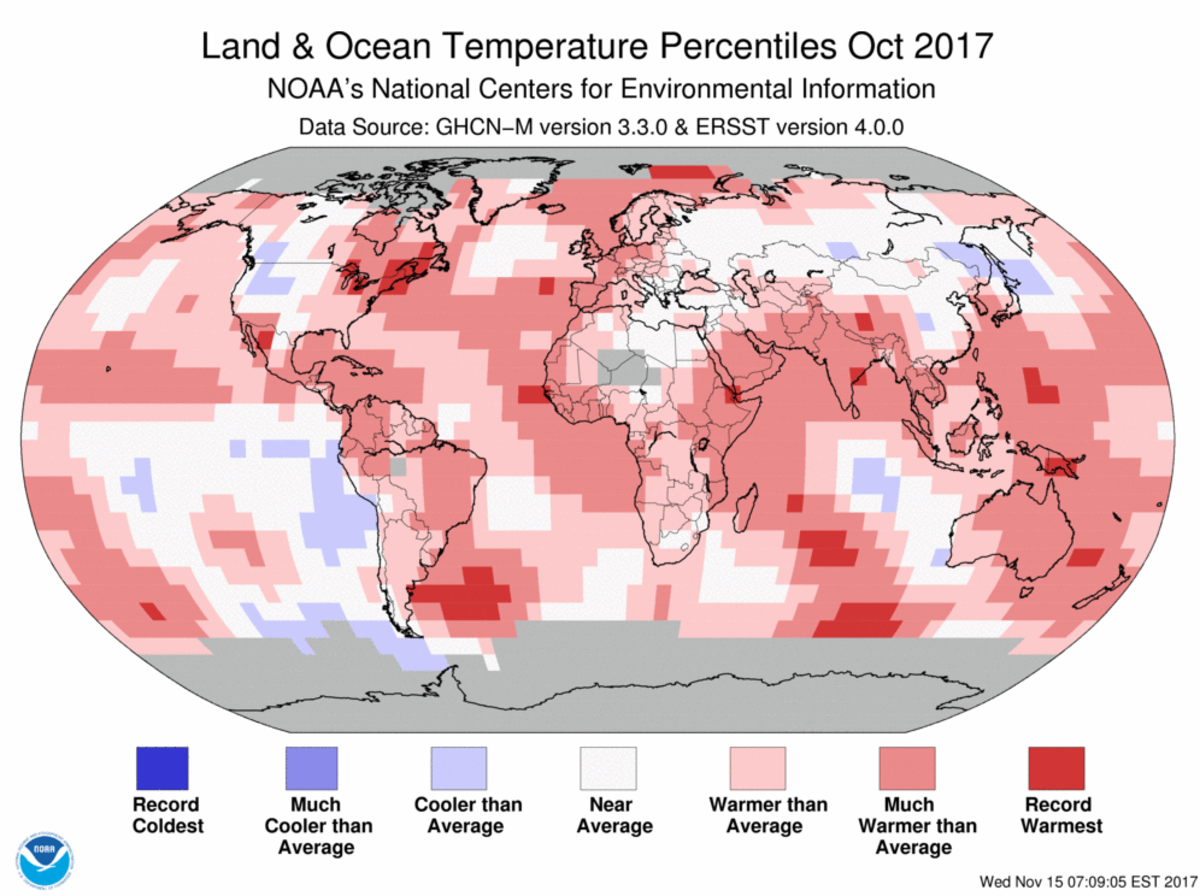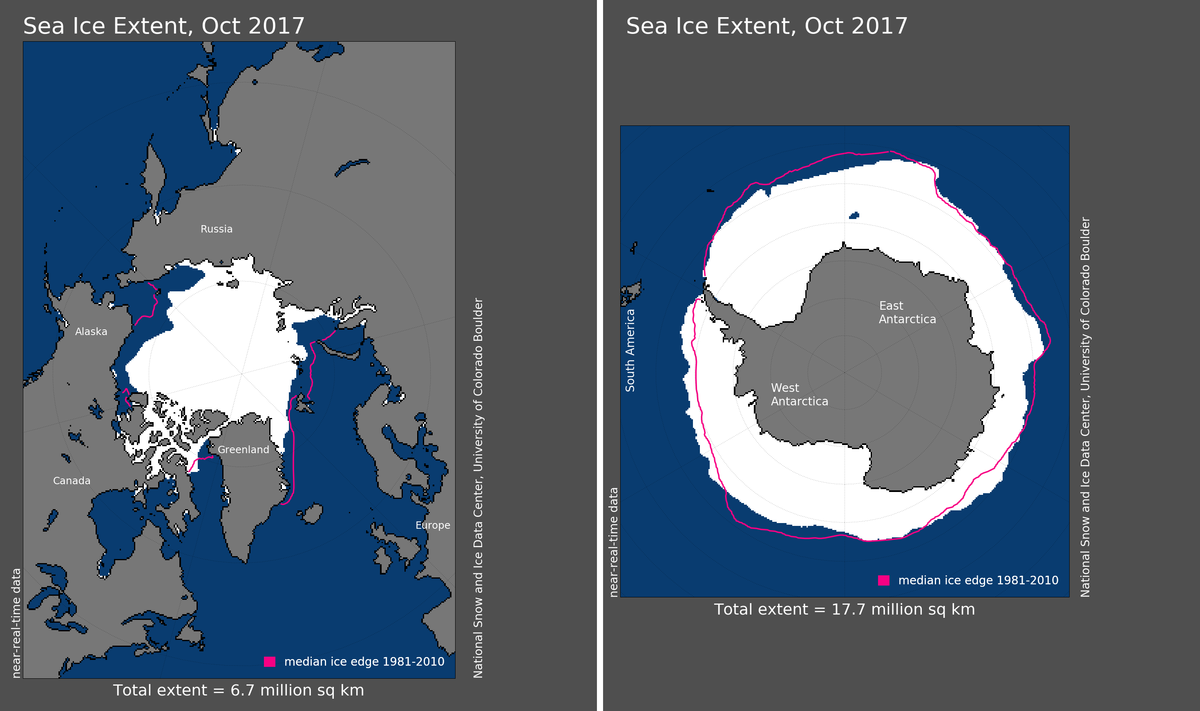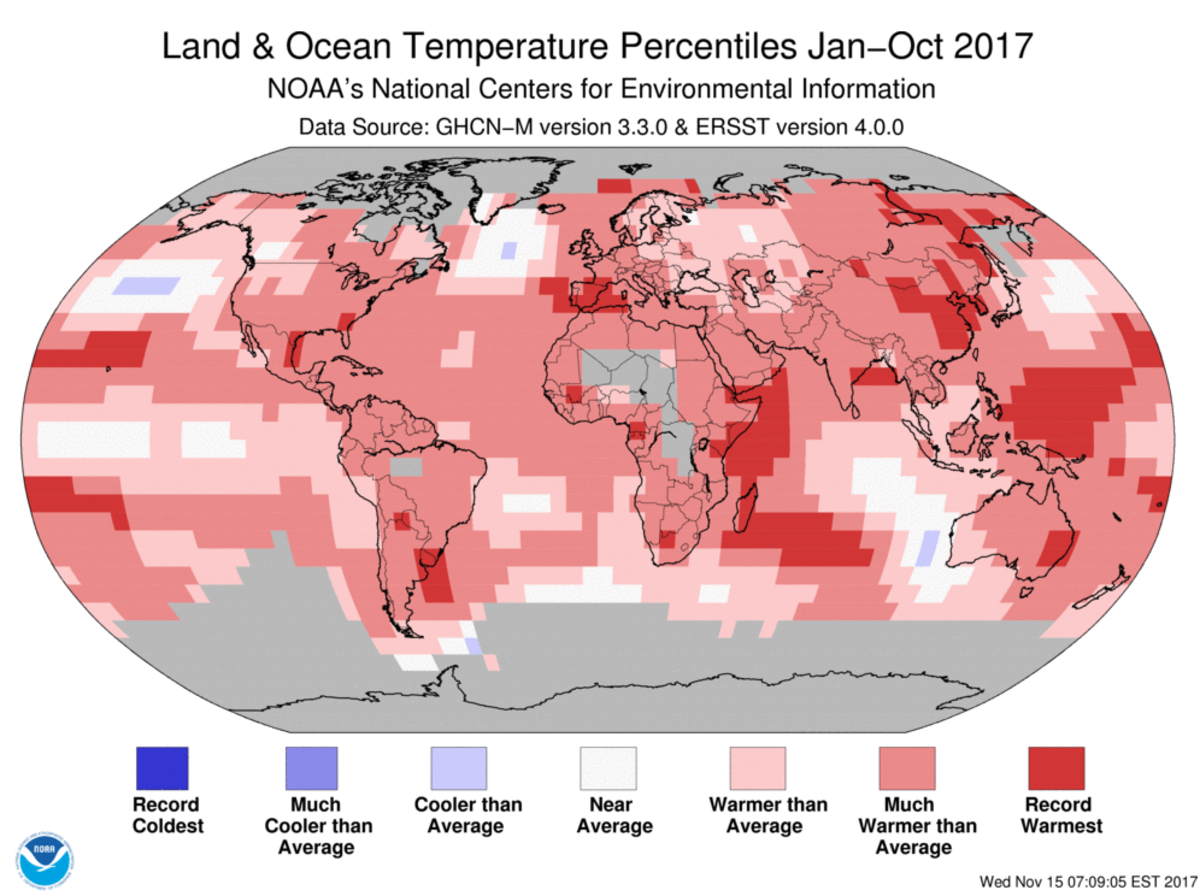Globe had its fourth warmest October and third warmest year to date on record

The globally averaged temperature over land and ocean surfaces for October 2017 tied with 2003 as the fourth highest for the month of October in the NOAA global temperature dataset record, which dates back 138 years to 1880. The year-to-date global temperature was third warmest on record.
This monthly summary, developed by scientists at NOAA's National Centers for Environmental Information, is part of the suite of climate services NOAA provides to government, business, academia, and the public to support informed decision-making.
October 2017 Temperature
The October temperature across global land and ocean surfaces was 1.31°F above the 20th century average of 57.1°F, tying with 2003 as the fourth highest value for October in the 138-year period of record, behind 2015 (highest), 2014 (second highest), and 2016 (third highest). The October 2017 above-average global land and ocean temperature was mainly driven by warmer ocean temperatures. October 2017 marks the 41st consecutive October and the 394th consecutive month with temperatures at least nominally above the 20th century average.
The October globally averaged land surface temperature was 1.78°F above the 20th century average of 48.7°F. This value was the 11th highest October land global temperature in the 1880–2017 record.
The October globally averaged sea surface temperature was 1.13°F above the 20th century monthly average of 60.6°F. This was the fourth highest global ocean temperature for October in the record, behind 2015 (highest), 2016 (second highest), and 2014 (third highest).
October 2017 Sea Ice and Snow Cover
The average Arctic sea ice extent for October was 633,000 square miles (19.6 percent) below the 1981–2010 average, according to analysis by the National Snow and Ice Data Center using data from NOAA and NASA. Sea ice extent was below average throughout much of the Arctic, particularly in the Chukchi, Kara, and Barents Seas. Overall, this was the fifth smallest October extent since records began in 1979.
Antarctic sea ice extent during October 2017 was 160,000 square miles (2.2 percent) below the 1981–2010 average, also the fifth smallest October value on record. On October 11 and 12, the Antarctic sea ice extent reached its annual maximum extent at 6.96 million square miles. This was the second smallest Antarctic sea ice extent maximum on record and tied with 2002 as the latest date of occurrence.
According to data from NOAA and analyzed by the Rutgers Global Snow Lab, the Northern Hemisphere snow cover extent during October was 1.4 million square miles above the 1981–2010 average. This was the ninth largest October Northern Hemisphere snow cover extent in the 50-year period of record. The North American snow cover extent was the seventh largest on record, while the Eurasian snow cover extent was the 11th largest.
Year-to-Date (January–October 2017)
The year-to-date temperature across global land and ocean surfaces was 1.55°F above the 20th century average of 57.4°F. This was the third highest value for January–October in the 1880–2017 record, behind the record year of 2016 and 2015 (second highest). Nine of the ten warmest January–October global land and ocean temperatures occurred since 2005.
The year-to-date globally averaged land surface temperature was 2.39°F above the 20th century average of 48.7°F. This was the second highest for January–October in the 138-year record, behind 2016 by 0.32°F.
The year-to-date globally averaged sea surface temperature was 1.22°F above the 20th century average of 61.0°F. This was the third highest for January–October in the record, behind 2016 (highest) and 2015 (second highest).







